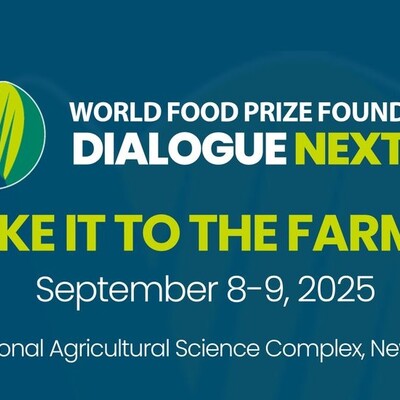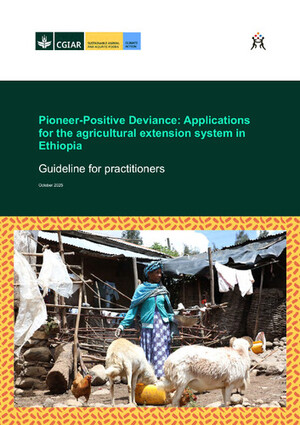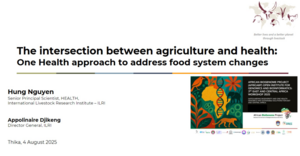
Addressing the challenge of harmonizing RHoMIS tool data from more than 30 countries
At last month’s (9–13 Sep 2019) 9th Multi-Stakeholder Partnership Meeting of the Global Agenda for Sustainable Livestock (GASL) in Kansas, James Hammond, farming systems analyst at the International Livestock Research Institute (ILRI), presented on how ILRI researchers and partners are addressing the scarcity of data describing the functioning of smallholder farms in sub-Saharan Africa and beyond.
Although every year hundreds of thousands of farmers are interviewed by research and development organizations, the surveys are often subtly different, producing data which are in the end incomparable. ILRI researchers have developed the Rural Household Multi-Indicator Survey (RHoMIS) tool to help close this gap and squeeze more value out of every valuable farmer interview.
The RHoMIS tool provides a modular system for building and then analysing farm household surveys. The objective is to give an overview of the whole farm systems – cropping, livestock, livelihoods, market engagement, food security, gender equity, and greenhouse gases. The tool is useful for carrying out scoping and monitoring in development projects, and in establishing common synergies or trade-offs across different regions. It has been used to carry out nearly 30,000 interviews in research and development projects in over 30 lower and middle income countries (LMICs).
The data is being used to analyse agricultural productivity, the
role of livestock in agriculture and food security, sustainability, and more. Livestock
are an asset, a key source of income, and a vital source of nutritious foods
for many farming households in LMICs.
‘All the data are harmonized in terms of contents and we are now able to conduct some nice analyses,’ says Hammond. ‘Data from the tool has provided useful information on livestock ownership, productivity, and use patterns across different parts of Africa. From descriptive data analyses, we found, for example, that there is surprisingly little egg consumption among households that own chickens in both east and west Africa, whereas milk yields in east Africa are much higher than in the west.’ he says. The role of animal breed, feeding, and management, as well as cultural norms, are under investigation as sources of variation.
‘We think this data can be used to support research that is seeking to finesse calculations of greenhouse gas emissions from livestock in sub-Saharan Africa and to assess trade-offs between the intensification of livestock production and greenhouse gas emissions in LMICs. The RHoMIS team is welcoming collaborations with partners in using the tool to compile and harmonize farm system data from across the sites where the tool has been used.
Download the presentation.
Read more about the RHoMIS tool
The 9th GASL Multi-Stakeholder Partnership Meeting took place 9–13 Sept 2019 at Kansas State University in Manhattan, Kansas. The more than 200 participants from more than 20 countries in this year’s meeting discussed the four domains ‘shaping the future of livestock’— Food and nutrition security, livelihoods and economic growth, animal health and welfare, and climate change and natural resource use.



















